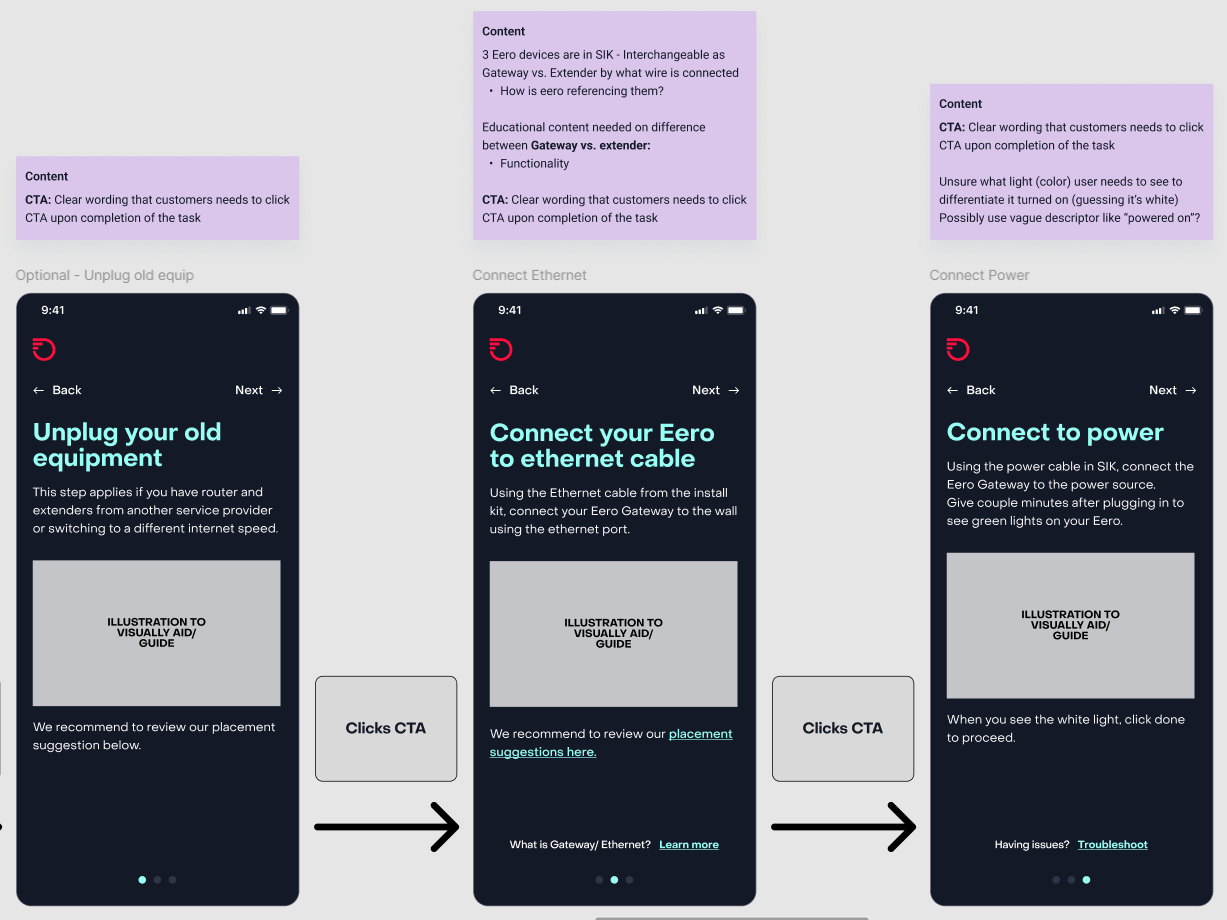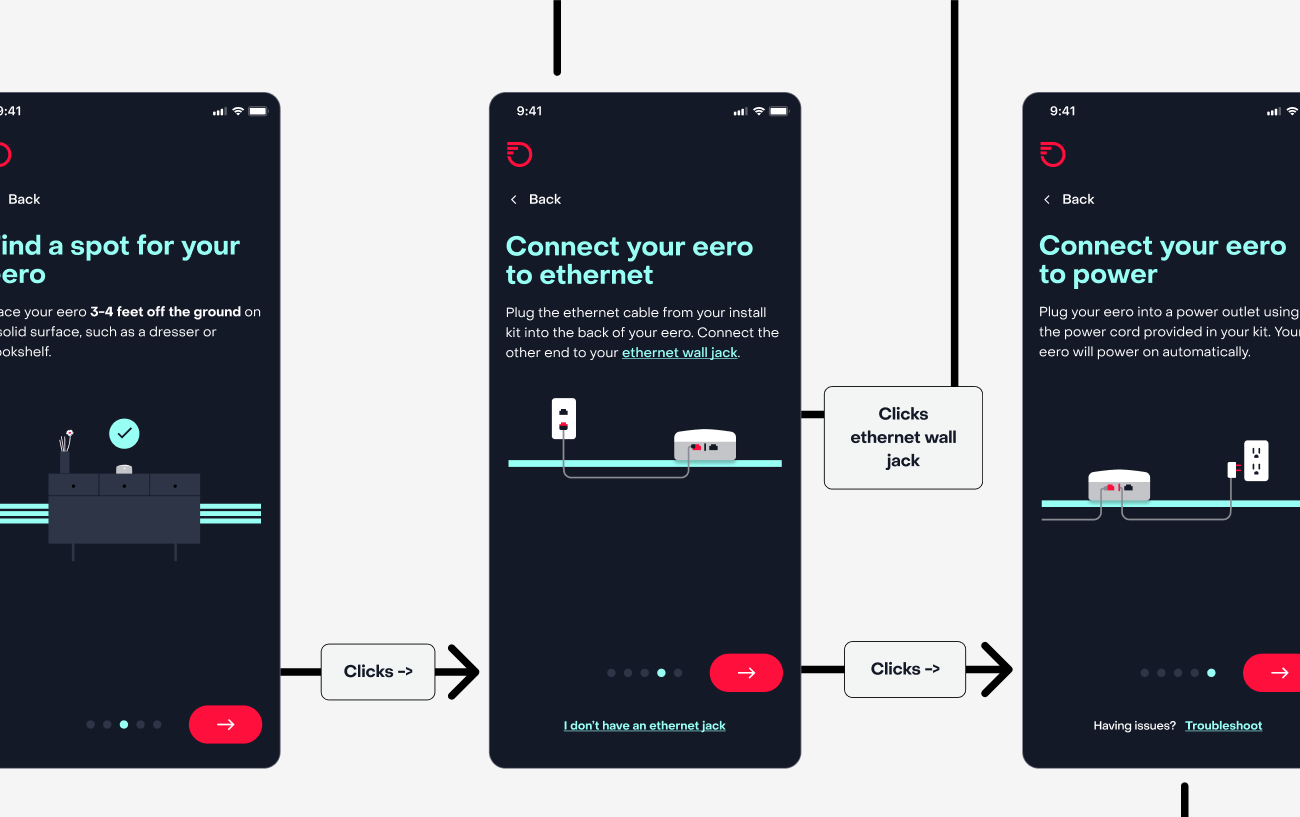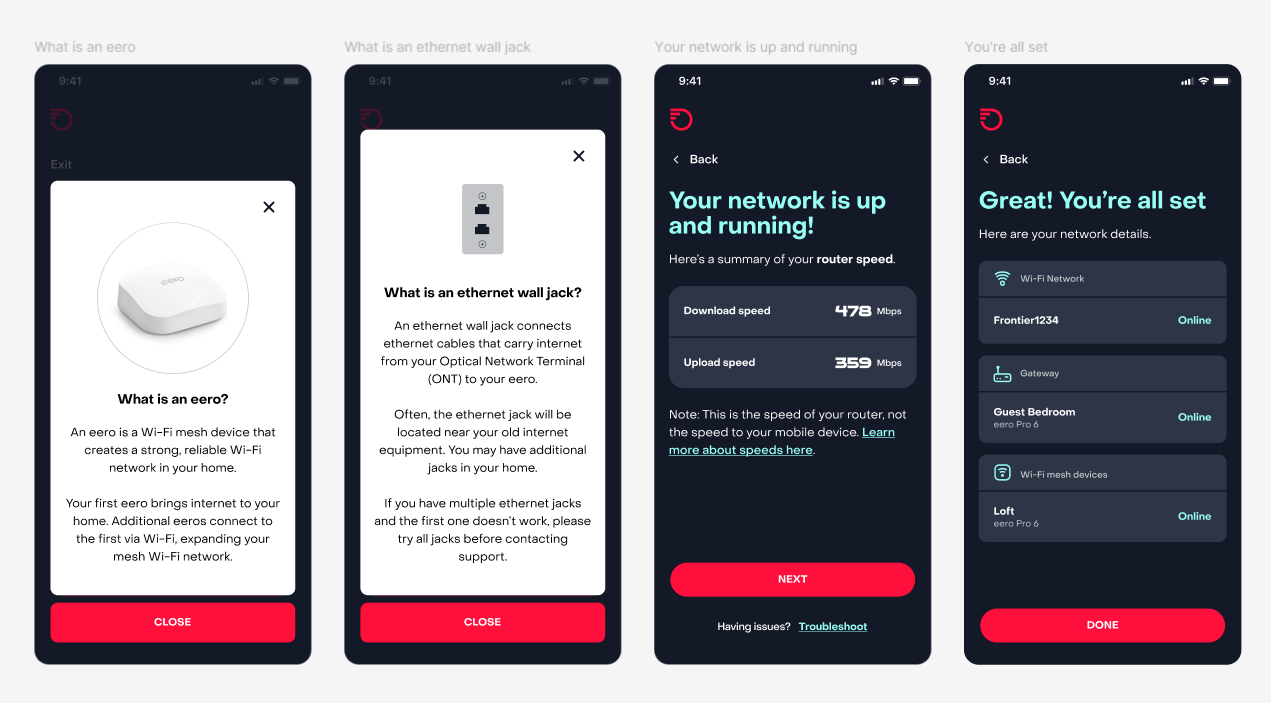Frontier
Self-Install
Feature
Frontier's self-installation option as an intuitive native app feature.
Users
Prospective and current Frontier internet customers.
Benefit
Cost savings, customer satisfaction, mobile app engagement.
My role
Lead content designer collaborating with designer and researcher.
Timeline
2023 - 2024
Summary
Frontier sought to improve its mobile app experience by integrating eero’s router setup features into its own app, MyFrontier. The vision was a seamless, self-service installation feature that reduced reliance on external apps and provided a unified experience for users.
Goal
The project aimed to reduce costs through decreased technician deployments, increase customer satisfaction through self-service, and increase mobile app users.
During high fidelity wireframing, we tracked user intents, guardrails, and other important information gained from discovery, research and collaboration to help define the content strategy for each screen.

Challenge
Frontier’s previous self-installation process required customers to download and use the eero app for router setup, while the MyFrontier app was used only for account management and billing. This disjointed experience confused and frustrated users, and led to higher support call volumes.
The challenge was to integrate eero’s router setup directly into MyFrontier, keeping users within the app for the entire self-installation process. Key obstacles included:
- User tech skill level: The experience had to accommodate a range of technical abilities—from tech-savvy users to those with limited tech knowledge.
- Variable flow: Users needed to be able to install one or multiple devices without being overwhelmed or confused.
- Account linking: The ability to create and link an eero account to the customer’s Frontier account within the same app—a requirement that came after we delivered the initial dev-ready designs.
User testing learnings drove us to add new screens and helped me refine our written content. A few examples of my additions include: hyperlinks leading to pop-up modals with more information, an entry point to an alternative use case that I discovered, more specific guidance and waiting time estimates.

Solution
We designed a comprehensive, step-by-step self-installation flow to address the challenges and support all users choosing this experience. A few highlights of my content include:
- Guided installation steps: Each step was clearly explained, from unpacking the package and identifying cables to setting up the router and network credentials and performing a speed check. I used optional hyperlinks and tooltips to support those who needed even more guidance.
- Informational tooltips: I added information icons triggering modals to provide users with visual and written content for identifying cables and other equipment involved in the installation.
- Alternative path: Recognizing that some users had nontraditional setups, such as needing to plug directly into a device instead of an ethernet wall jack, I added a “Don’t have an ethernet jack?” option that opened relevant support content without disrupting the flow for typical users.
- Clear expectations: User testing revealed confusion around how to handle cables and devices, and what to do with automatic transitions. I introduced clear expectations, such as “use the cable from your installation kit” to clarify cable use and “this may take a few minutes” to clarify when the user needed to wait or take action.
Informational pop-up modals added written content and visuals to help users understand and identify their equipment. Later screens celebrate the user's progress and the completion of their installation, while showing key network information.

Results
Mobile engagement
Mobile app installations and logins increased as customers used the new feature.
Customer satisfaction
Frontier's Net Promoter Score (NPS) increased, reflecting satisfaction with the installation experience.
Technician visits
~2,500 installation appointments saved in the first month as customers completed their own installations.
Support calls
8% reduced support calls as users successfully completed their installs with minimal need for assistance.
Reflection
The project reinforced the importance of user testing early in the design process—especially for a new feature. Testing helped us identify user pain points and allowed us to validate and refine our designs.
The project also demonstrated that new app features like this require follow-ups and flexibility. New use cases and data emerged after launch, requiring us to revisit and solve new challenges.